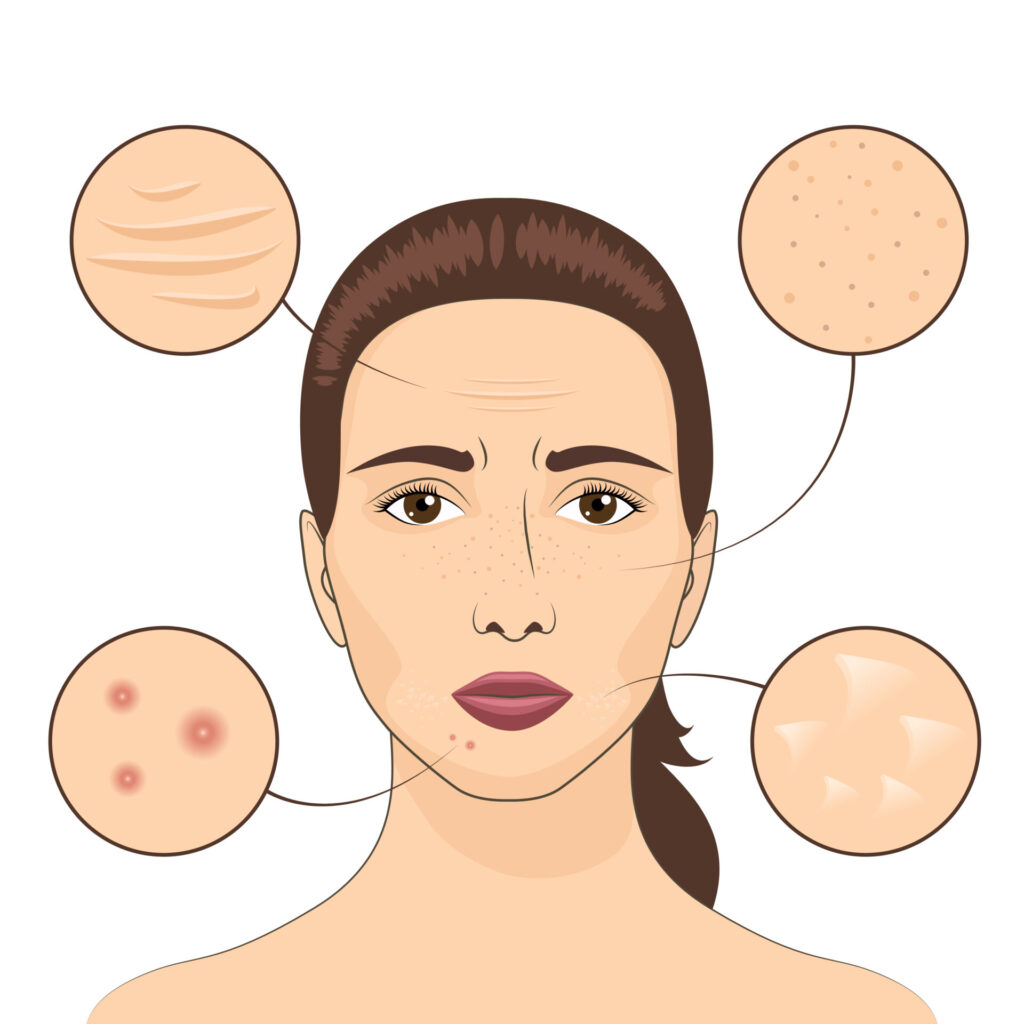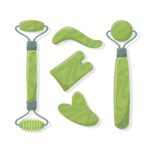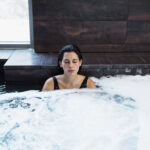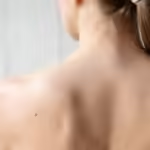Acne can occur elsewhere besides your face. The Mayo Clinic states that it can affect any area of the body with hair follicles or glands that secrete oil, such as the shoulders, chest, and back.
Back acne, often known as “bacne,” can be very problematic.
Most people have facial acne at some point in their lives, but some people also get back or even chest acne. According to the NHS, almost 50% of individuals with acne have back acne.
Similar to your face, your back is covered in many sebaceous glands that release sebum, an oily material.According to Cincinnati dermatologist Kara Shah, MD, “back acne is caused by an accumulation of oil [sebum] and dead skin cells within the skin pores, along with an overgrowth of a common skin bacteria, Cut bacterium acnes, which triggers an inflammatory response.”
According to her, “sports activities that cause increased sweating and friction from athletic gear and clothing are commonly associated with back and shoulder acne.” The National Institute of Arthritis and Musculoskeletal and Skin Diseases states that an acne lesion develops when a blocked follicle eventually degrades.
What Are the Different Types of Back Acne You Need to Know?
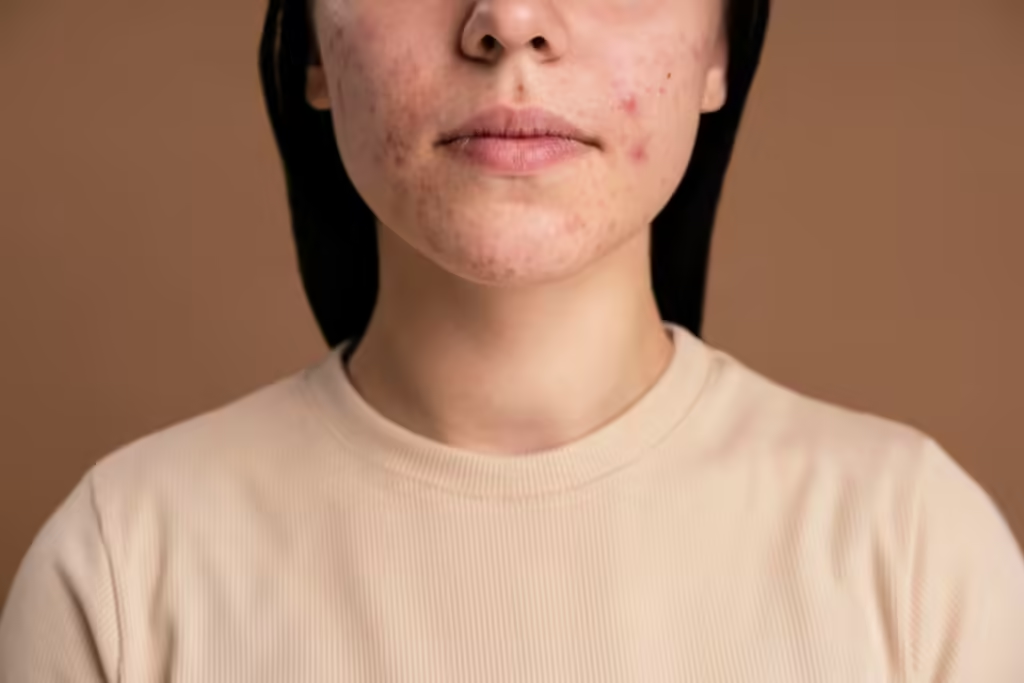
Back acne treatment can be challenging, so it helps to understand the types of acne lesions that can occur on your back, which include:
Whiteheads: also called closed comedones, appear as a white lump under your skin caused by a blocked follicle that remains closed.
Blackheads: A blackhead, also called an open comedone, is the result of a blocked follicle on the surface of your skin opening. Blackheads don’t appear black-tipped because dirt has entered your follicle; rather, they are the result of an interaction between sebum and the atmosphere.
Papules: Pulmones are tiny, pink pimple-like lesions on the skin that can occasionally be sensitive. This kind of acne develops when an obstructed hair follicle becomes irritated; it doesn’t contain pus.
Pustules: A pustule, often known as a pimple, is a white or yellow papule that is filled with pus and has a reddish base. These lesions are also caused by inflammation within a hair follicle that is blocked. The pustule fills with pus as a result of an accumulation of white blood cells.
Nodules: Bacteria become stuck in a hair follicle and cause this kind of acne. Deep beneath the skin’s surface, these lesions occur, hardening into a big, uncomfortable lump. Because of the lesion’s deeper location, tissue is damaged, which sets off an inflammatory reaction.
Cysts: Larger, pus-filled acne lesions called cysts also develop from bacteria becoming stuck in a hair follicle. Cystic acne is characterized by a painful bump that may leave a permanent scar because the infection spreads further into the skin.
4 Steps You Can Take Toward Preventing Back Acne

Hormonal fluctuations and heredity are the key reasons that predispose one to “bacne,” therefore you can’t always control whether you acquire back acne.
However, there are things you may do to lessen the likelihood that you’ll have these lesions.
1. Avoid Certain Medications
Some pills, consisting of androgens (male hormones like testosterone) and lithium, are recognized to boom your chances of growing zits. If you’re taking any of those medications, communicate along with your medical doctor about viable alternative treatments.
2. Limit Your Use of Oil-Based Skin-Care Products
Try now not to apply pores and skin-care merchandise with oil, including moisturizers and cosmetics, to your again. These can cause again acne flare-ups. Also, the American Academy of Dermatology advises looking for merchandise categorized non comedogenic, which means they’re unlikely to clog pores.
3. Eliminate Pressure on Your Back
Back acne can be brought on by anything that increases perspiration and friction on the back, such as sports equipment, backpacks, and back braces, according to Dr. Shah. To reduce chafing and discomfort, Shah suggests selecting a backpack that is both light and fits well.
Wear a clean cotton T-shirt underneath to lessen extended strain and friction, or avoid wearing sports equipment (such as shoulder pads) that exerts pressure on your back for longer than necessary.
4. Wear Clean Clothes
Dirty clothes can harbor sweat, oil, and dirt, in addition annoying the skin and contributing to the development of zits,” notes Shah. “It’s usually pleasant to put on loose garb all through exercising and to take away sweaty garb after a exercise.
7 Science-Backed Tips for Treating Back Acne
So, what are the best treatments for back acne? Follow these tips.
1. Use an Over-the-Counter Treatment.
Over-the-counter acne creams and gels with chemicals like benzoyl peroxide, resorcinol, salicylic acid, and sulfur can help treat mild cases of back acne by eliminating existing blemishes and preventing the formation of new ones.
Of course, you’ll probably need help from someone to apply acne creams to your back. Using a body wash containing chemicals that combat acne might be more convenient.
Yoram Harth, MD, a dermatologist and the medical director of MDacne in San Francisco, claims that regular body washes are insufficiently effective in treating body acne. “You need a medicated body cleanser with chemicals like salicylic acid that can unclog your skin pores and kill acne bacteria, preferable for a real effect.
2. Regularly Wash Your Skin.
To prevent clogging your pores, look for body cleansers labeled as “oil-free” or “noncomedogenic” on the packaging for treating body acne.Steer clear of astringents, abrasive scrubs, and antibacterial soaps since they can exacerbate your acne. And when washing your skin, use gentleness. According to Dr. Harth, exfoliators, loofas, and harsh scrubs can harm the skin’s protective layer and exacerbate body acne.
3. Shower After Your Workout.
Shower right away after working out because heat and humidity promote bacterial growth, advises Harth. If you are unable to take a shower right away, change into fresh clothes after wiping as much perspiration off of your body as you can with an oil-free cleansing wipe.
4. Don’t Squeeze or Pick Back Lesions.
Attempting to cure acne by popping or picking at pimples can only make the condition worse and harm your skin. According to Harth, “frequent picking can result in brown spots and scars because the skin on the body heals more slowly than the skin on the face.”
5. Avoid Excessive Sun Exposure.
UV radiation from the sun can deepen acne and cause scars on your body, including on your back. Wear sunscreen at all times, and reapply as needed. This helps prevent skin cancer and UV damage in addition to clearing up acne.
6. Wash Your Sheets
Make it a point to wash or replace your bedding once or twice a week, particularly if you sleep on your back. By doing this, you can clear your bedding of germs and dead skin cells that might clog your pores and worsen back acne.
7. See a Board-Certified Dermatologist
If taking care of yourself doesn’t help with back acne, schedule a consultation with a board-certified dermatologist.
An expert in skin care can examine your back, identify if you have acne or another skin ailment, and, if required, recommend medicine to manage lesions.
Depending on the severity of your back acne, your doctor may recommend laser therapy, chemical peels, steroid injections, prescription creams, antibiotics, or oral acne medication as a form of treatment.

